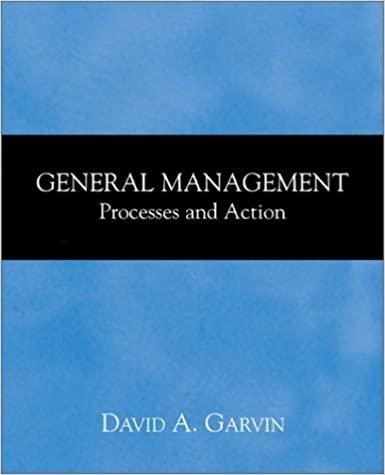Answered step by step
Verified Expert Solution
Question
1 Approved Answer
VCG and GSP Auctions can be useful in a variety of settings, including in allocating resources. Consider the following situation: You work in a hospital,
VCG and GSP Auctions can be useful in a variety of settings, including in allocating
resources. Consider the following situation: You work in a hospital, assigning rooms
to patients. When you do this, you need to consider the amenities that each room
has measured by an "amenities score" from to where means the room is
barebones and means the room has all possible amenities and the importance of
these amenities to the patient's recovery measured by a "recovery quotient," where
a lower number means that amenities have less of an impact on the patient's
recovery and a higher number means amenities have more impact
Today you need to assign three patients each to a different room:
Patient has a recovery quotient of
Patient has a recovery quotient of
Patient has a recovery quotient of
You have three rooms open:
Room has an amenities score of
Room has an amenities score of
Room has an amenities score of
a A patient's valuation is their level of recovery in a given room, which can be
calculated as:
level of recovery patient's recovery quotient room's amenities score
If your goal is to maximize the total level of recovery ie have a socially
optimal outcome which patients would get assigned to which rooms?
b The hospital charges the patient the auction price for their stay. In a VCG
auction, how much is each patient charged? Show all of your work.
c Since being healthier means fewer followup medical costs, the patient's
payoff is level of recovery price. In a VCG auction, what is each patient's
payoff? Show all of your work.
d It turns out that the recovery quotients are calculated using a survey. A
patient advocate wants to help Patient save money on room costs
followup medical costs so they're trying to coach the patient to answer in a
way that changes their recovery quotient and gets them a higher payoff. Is it
possible for Patient to retake the survey and get a higher payoff than in part
c If yes, give an example of a different recovery quotient the patient could
get and show how, with this recovery quotient, the patient's payoff increases.
If no explain why not.
e In a GSP auction, how much is each patient charged and what is their payoff?
Show all of your work.
f Is it possible for Patient to retake the survey and get a higher payoff than in
part e If yes, give an example of a different recovery quotient the patient
could get and show how, with this recovery quotient, the patient's payoff
increases. If no explain why not.
g In parts d or f if the patient could improve their payoff, did they do so by
increasing or decreasing their level of recovery? Could they have taken the
opposite strategy as well ie if they improved payoff by decreasing their
level of recovery could they also have improved payoff by increasing their
level of recovery Explain.

Step by Step Solution
There are 3 Steps involved in it
Step: 1

Get Instant Access to Expert-Tailored Solutions
See step-by-step solutions with expert insights and AI powered tools for academic success
Step: 2

Step: 3

Ace Your Homework with AI
Get the answers you need in no time with our AI-driven, step-by-step assistance
Get Started


